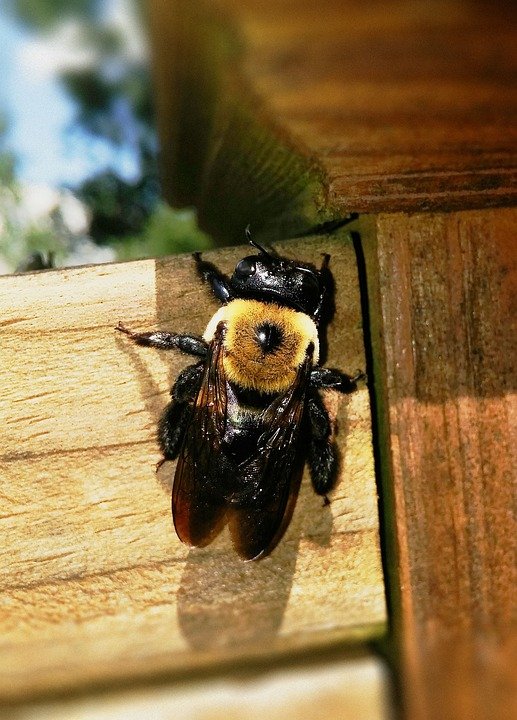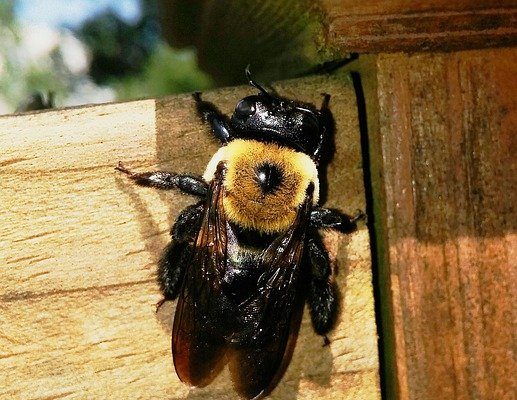
Imagine you’re sipping coffee with a friend, and they mention how their woodwork seems to be suffering—thanks to a few carpenter bees setting up shop nearby. You might think, “Can I really keep those?” It’s a valid question. While they don’t produce honey like honeybees, carpenter bees play an important role in pollination. So, whether you’re curious about their behavior, benefits, or how to manage them, you’ve come to the right place!
What Are Carpenter Bees?
Carpenter bees belong to the family Apidae, which includes honeybees and bumblebees. They’re often recognized by their large, black and yellow bodies, and their tendency to bore into wood. Unlike honeybees that live in colonies, carpenter bees are usually solitary creatures. The females are the ones you’ll see actively drilling holes into wood to lay their eggs, while the males tend to patrol the area, showcasing their flashy winged endurance.
You might notice them around your porch or garden furniture, and it’s not unusual to see them hovering in groups. Their name comes from the fact that they create nests in dead wood or soft, decaying timber. Think of them as tiny construction workers, picking the perfect spot to build a home for their future generation.
But here’s the thing: while they can cause damage to your wood structures, they’re not aggressive and usually won’t sting unless provoked. So, if you have a few carpenter bees buzzing around, it doesn’t necessarily mean you’re in for trouble!
Are Carpenter Bees Good for Your Garden?
You might be surprised to learn that carpenter bees are actually beneficial for your garden. They are great pollinators, helping flowers, fruits, and vegetables thrive. Their size allows them to collect and transfer pollen effectively, contributing to a vibrant and healthy ecosystem.
Here’s an interesting tidbit: carpenter bees visit many of the same flowers as honeybees, but they have a unique way of collecting pollen. Instead of gathering it from the flower’s surface, they often chew through the base of the flower to access the nectar. This method can result in quicker pollination since the flower doesn’t lose its pollen to the air while being foraged.
If you’re looking to attract more pollinators to your garden, you might want to embrace these buzzers. Just ensure they have a suitable nesting site—like untreated wood, or even an old log or branch—and you could see your garden flourish!
Can You Keep Carpenter Bees as Pets?
This is where things get a little tricky. While keeping carpenter bees as pets might sound like a fun idea, it’s not quite as simple as it seems. Carpenter bees are *not domesticated animals*, and they thrive best in their natural environment. Plus, their lifestyle differs significantly from more traditional pets.
If you’re considering keeping them for pollination purposes, rather than trying to contain them in a hive, you might have better luck encouraging them to stay in your yard. This can be done by providing natural nesting spots and planting flowers that attract them. It’s a more hands-off approach that allows them to do what they do best—pollinate!
Of course, if you’re looking to learn more about their behavior and habits, installing a bee hotel can allow you to observe them up close. Just remember to provide them with ample space and avoid using chemicals around your garden.
How to Manage Carpenter Bees
If you find yourself with a carpenter bee problem in your backyard, you’ll want to manage them carefully. Here are a few strategies you can use to keep them under control:
- Seal existing holes: After the bees are done nesting for the season, seal any holes with wood putty or caulk to prevent future infestations.
- Avoid untreated wood: Use hardwoods or painted surfaces to deter them from nesting in your structures.
- Provide alternatives: If you’d like to keep them around, providing untreated wood blocks or logs can redirect their attention away from your home.
- Use natural repellents: Essential oils like peppermint or citrus can discourage them from settling too close to your living spaces.
Let’s face it: managing carpenter bees requires a bit of balance. You want them around for pollination—but not doing damage to your property. By being proactive, you can help maintain that balance.
What to Do if Carpenter Bees Are Causing Damage
If carpenter bees have already started boring holes in your wood, you may need to take some action. Here’s a simple outline of steps to address the damage:
1. Assess the damage: Take a close look at the affected areas. Are there multiple holes? Is the wood still structurally sound? Understanding the extent of the issue is crucial.
2. Repair or replace: If the damage is superficial, filling the holes with wood filler and repainting can often be enough. However, if the wood is severely compromised, you might need to replace it entirely.
3. Prevent future infestations: Once repairs are complete, make sure to paint or treat the wood. This discourages new bees from making their home in the same spot.
4. Monitor: Keep an eye on any new activity. If you see carpenter bees returning, you may want to revisit your management strategies.
Remember, while they might appear as pests, carpenter bees contribute to your local ecosystem. With a little understanding and management, you can share your space without too much conflict.
The Benefits of Carpenter Bees in the Ecosystem
Carpenter bees play a critical role in the ecosystem. As pollinators, they help a variety of plants reproduce, which is essential for food production and maintaining biodiversity. They’re especially important in regions where other pollinators might be declining.
By keeping carpenter bees in your local garden, you’re not just helping your plants grow; you’re also supporting a whole community of insects and wildlife. In a way, you could see them as tiny environmental champions, tirelessly working to pollinate the plants we rely on.
Here’s a fun fact: Carpenter bees tend to prefer certain flowers, such as lavender, sunflowers, and various fruit blossoms. Planting these species can attract these fuzzy friends, benefiting both your garden and the bees.
In Conclusion: Should You Keep Carpenter Bees?
So, can you keep carpenter bees? The answer isn’t a simple yes or no. While you can’t keep them like traditional pets, you can definitely encourage them to stick around in your garden. With their impressive pollination skills and unique habits, carpenter bees can enrich your environment.
Embracing these pollinators can lead to a more colorful and blooming garden, filled with life. Just be mindful of how they can impact your wood structures and take steps to manage them when necessary. With the right balance, you can enjoy the benefits of carpenter bees without compromising your home.
As always, remember to respect these little creatures and the important work they do. They’re not just buzzing around—they’re helping to sustain the cycle of life in our gardens!

